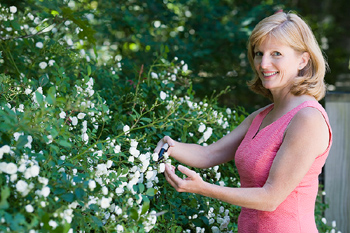How to Plant Shrubs
Shrubs are one of the most popular additions for any garden or yard. Planting shrubs is basic to just about any yard work, so you need to know how to plant shrubs. There are many different types of decorative shrubs, so you’ll have your option for bounding your yard and garden.
However, shrubs are hard to maintain, because some both grow fast and don’t need watering, while others grow slow and need plenty of water. Also, pruning and watering are important, once planted. Shrubs make for a decorative yard piece, but one that needs trimming occasionally.
If these basic tasks aren’t performed, the shrubs do one of two things: die or grow out of control. When properly cared for, shrubs produce berries, increasing the physical appearance of your yard, or serve as a fragrant addition to your landscaping.
Learn how to plant shrubs of different types, to create a customizable lawn tableau, but start with one type of shrub and work from there.
Getting Started Planting Shrubs
Before planting, take into consideration the mature size of the shrub. If the shrub gets big when it matures, don’t place it near your house, or any other structure.
Where Not to Plant Your Shrubs
If a shrub provides a lot of shade, you don’t want to place it near your neighbor’s house, because that will rob them of sunshine for their plants. Don’t plant shrubs near to any garden, either, for the same reason.
Don’t plant shrub where they obstruct the sidewalk or driveway. That makes for a nightmare amount of trimming.
Don’t plant shrubs near underground or overhead utilities. People make this mistake all the time when they first learn how to plant shrubs. Planting shrubs too close to the water system or drainage system causes the roots to pierce the pipes. That makes a huge mess.
Where to Plant Shrubs

How to Plant Shrubs
Plant your shrubs in a place where the soil is moist and where they get plenty of sunlight, like most other plants. Shrubs are hardy, however, so plant them just about any time of the year, so long as the ground isn’t frozen.
Planting Shrubs
Dig a hole twice as wide and almost as shallow as the root ball of the shrub. Make sure the soil in the hole is loose, so the roots penetrate into it and grab hold. If you replant a potted shrub, gently lay the shrub on its side and tap the pot to loosen the root ball, which makes it comes out easier.
Once you have the shrub out of the pot, take a shovel and tap the root ball to loosen it up, so you can plant it in the hole. If you are trying to plant a shrub that has its roots wrapped in plastic or burlap, partly remove the burlap. Completely remove plastic and place the shrub in the hole.
Bury the roots up to about an inch from where the roots meet the trunk. Add soil to the mound and make sure to tamp it down (lightly) with a shovel or your foot, to make sure that the shrub is held in place by the dirt. Form a temporary water basin around the shrub, so the water penetrates the soil and is absorbed by the dirt.
If the root ball is dry, make sure there is a hose trickling water into the hole while you’re planting.
Caring for Your Shrub
Keep a close eye on the shrub, to make sure that there’s no sign of moisture stress. Do this for the first couple of years, until the shrub is settled in. If you see signs of wilting leaves or dry soil, water the shrub. You don’t want to flood shrubs but, instead, make it a nice slow stream, so that the water can soak in, allowing a nice deep root system.
Certain shrubs need to be covered during the winter time, to protect them from the cold. Do all of these things and keep the area under the shrub mulched, and your shrubs should live longer and healthier lives.
Planting shrubs requires a little bit of work, because shrubs tend to be larger than most plants in your yard, but learning how to plant shrubs is basic and straighttforward.
